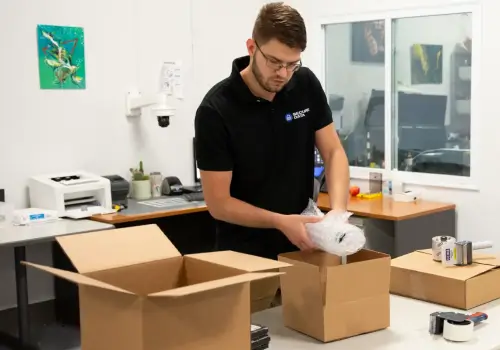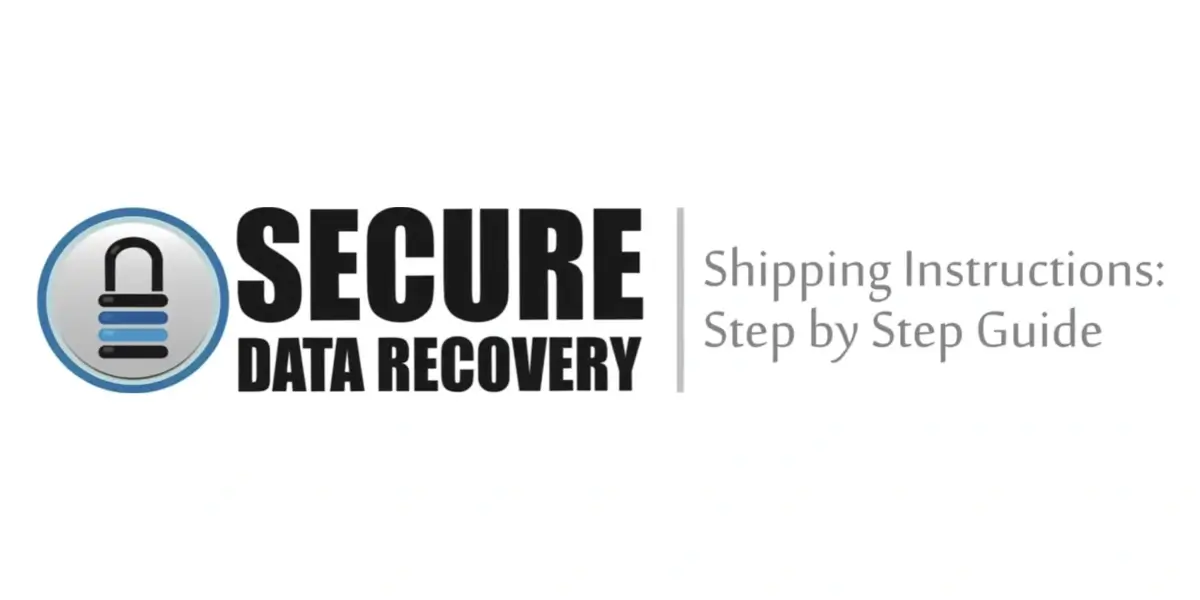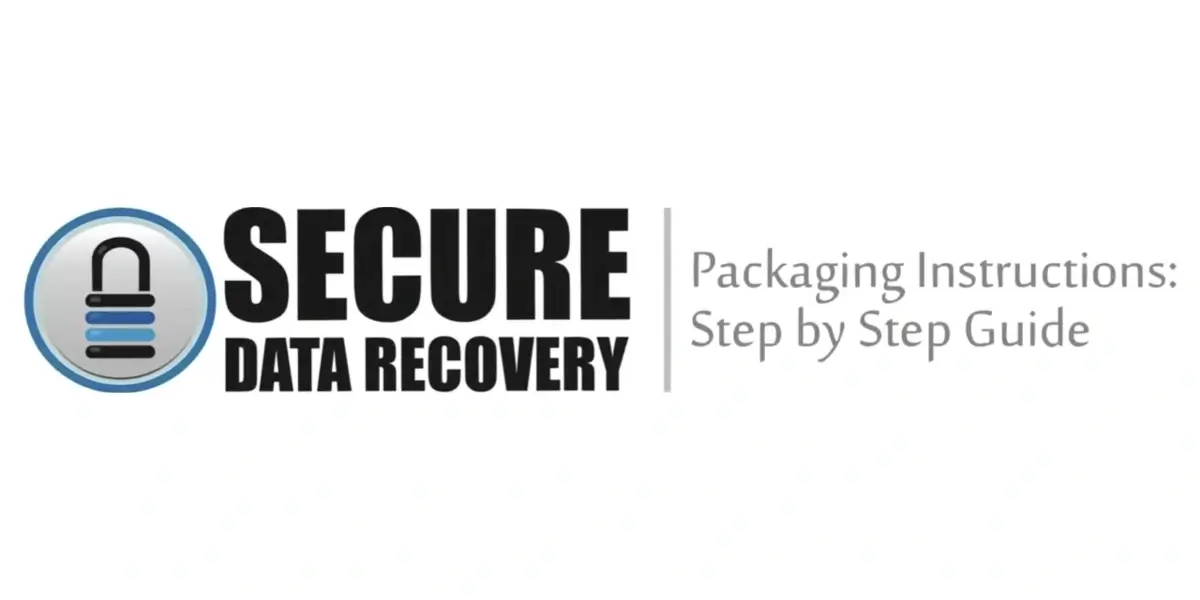
Packing and Shipping your Media For Data Recovery
Digital devices are sensitive to electrostatic discharge and impact damage. When you send your device to Secure Data Recovery Services, you should choose a reputable shipping company and use appropriate packing materials to keep your media safe. This guide will help you pack hard drives, RAID arrays, flash media and other devices.
Shipping Instructions: Step-by-Step Guide

The following shipping tips apply to all types of digital media:
1. Pack tight.
Use bubble wrap or non-movable foam cushioning to protect your media from impact damage during shipping. Never use foam-packing peanuts, as they create a potentially dangerous static charge and will not provide sufficient protection for hard drives, solid-state drives and other relatively heavy media.
2. Protect against electrostatic discharge (ESD).
Pack internal hard drives and all other devices with exposed circuit boards in anti-static bags. You can find anti-static bags at many electronic stores, and all new hard drives come with an anti-static bag.
3. Use a sturdy cardboard box.
Inspect the box for signs of damage and wear before packing. Do not use chipboard cartons or padded envelopes when shipping hard drives, as these containers do not provide sufficient protection.
4. Choose a dependable shipping company.
Use FedEx, UPS, DHL or another company that provides traceable shipping numbers. Consider paying for optional shipping insurance.
5. Identify your case.
Write your service ID number clearly on three sides of your package in bold print. This will allow our staff to easily identify your media when it arrives.
6. Ship to the address listed on your case setup email.
Keep a copy of your case setup number and shipping information.
Individual packing requirements for different types of items are listed below. If you have any questions about these requirements, contact our customer service team before shipping your media.
Packaging Instructions: Step-by-Step Guide

Packing Hard Drives
You should always pack hard disk drives firmly in bubble wrap. Tape the sides of the wrap to prevent your hard drive from slipping out during shipment. If your hard drive is not in an external enclosure (see below), put it in an anti-static bag before packing. Please do not tape anything over factory label.
Desktop Hard Drives and Solid-State Drives - Surround desktop hard drives in at least 3-6 inches of bubble wrap. You can also use shipping foam, but make sure that the hard drive cannot move during transit.
Laptop Hard Drives - Use 3-6 inches of bubble wrap. Do not use foam containers that are not specifically designed for laptop hard drives.
External Hard Drives - External drives do not need additional static protection, as their enclosures provide protection against electrostatic discharge and minor impacts. Keep your hard drive in its original enclosure. Please include power cables and interface cables with your shipment.
Pack your external hard drive firmly in at least 3-6 inches of bubble wrap. Alternately, you can use your external hard drive's original packaging, provided that you still have all of the inserts that came with the device.
Multiple Hard Drives - Once again, use 3-6 inches of shipping materials when shipping hard drives. Make sure that none of the drives can move during shipment. Clearly label each hard drive for the benefit of our staff.
Packing RAID Arrays and Servers
In most cases, we do not need your RAID controller card or server hardware to perform data recovery services. If our engineers need access to this hardware or if you would rather not remove the hard drives from your server, our customer service team will give you detailed instructions for shipping your media.
Keep the following RAID shipping tips in mind:
- Label each drive with its position in your array. Remember that most RAID numbering systems start with drive 0, not drive 1.
- Pack each drive in an anti-static bag with about 3-5 inches of bubble wrap. Tape the sides of the bubble wrap.
- Make sure that the hard drives cannot move in their packaging. You should be able to shake your package without feeling movement.
- If our engineers request your controller card, pack it in an anti-static bag. Once again, you should use enough bubble wrap to prevent movement.
Packing USB Drives and Flash Cards
If your flash media is physically damaged, pack it in an anti-static bag. While you can safely use foam packing peanuts with USB drives and flash cards, we prefer bubble wrap; it provides better shock protection and limits electrostatic charge.
Packing Data Tapes and Cartridges
If you send multiple tapes to Secure Data Recovery Services, clearly mark each cartridge so that our engineers can easily identify your media. Keep your tapes in appropriate storage cases and surround each with bubble wrap.
Clearly mark the box with the words "fragile" and "magnetically sensitive." Place each tape on its edge so that the axis of the tape reel is horizontal in the shipping container.
Packing iPhones, iPads and Other Devices
Pack consumer electronics in sufficient bubble wrap to prevent it from moving around during shipment. If you have a case or the original container that came with your product, you can provide the device with extra protection. Protect any LCD screens with appropriate screen protectors or with a thin layer of foam padding.
If you need to ship a computer to Secure Data Recovery Services, use an approved shipping container or call our customer service department for additional advice and information.
Packing Your Return Media
If possible, leave your return media in its original packaging. Clearly mark three sides of the packaging with your case number and the words, "RETURN MEDIA" in bold letters.
When shipping hard drives, RAID arrays or any other digital devices, you should always err on the side of safety. Use high-quality packing materials to secure your device. Inappropriate packaging is by far the leading cause of media damage during shipment, but you can easily protect your media by following the tips outlined above.
